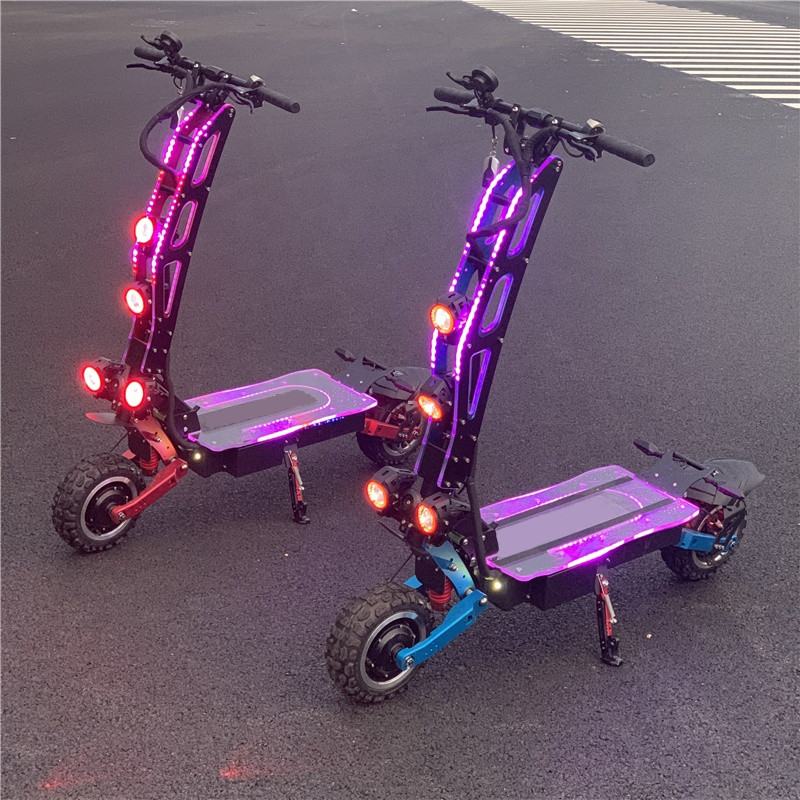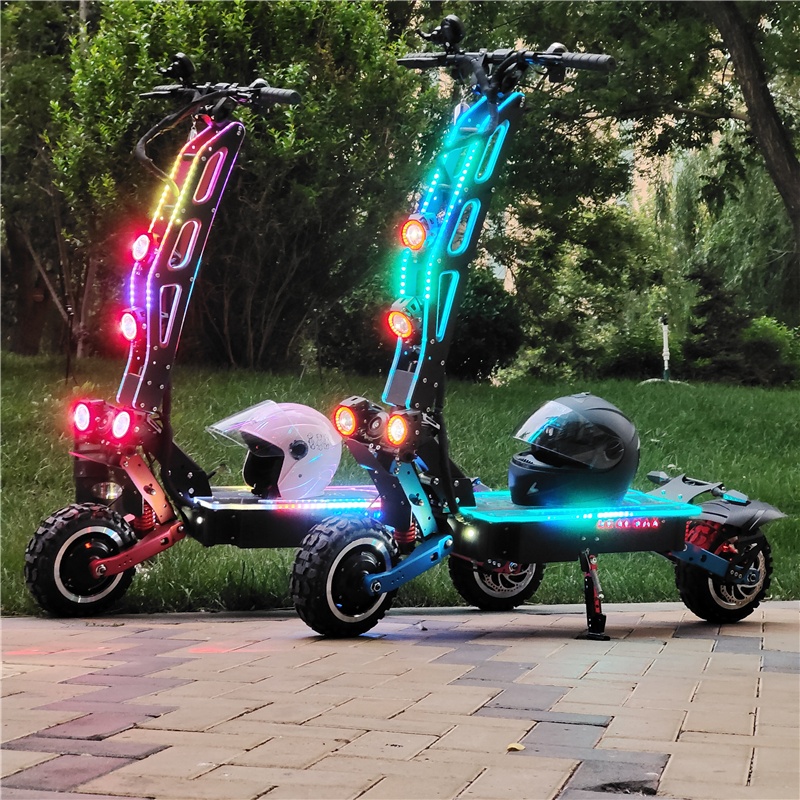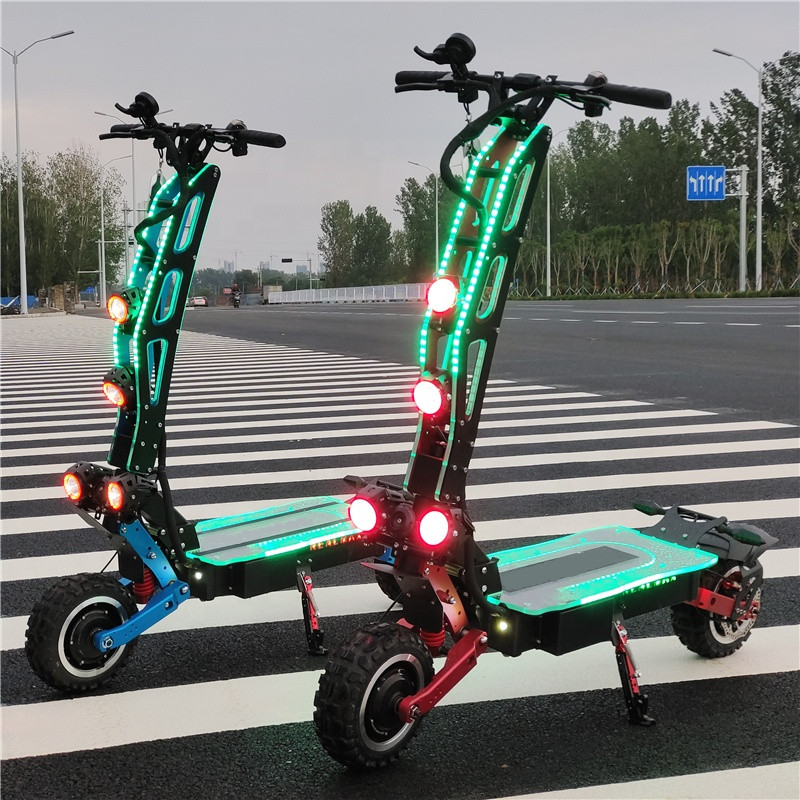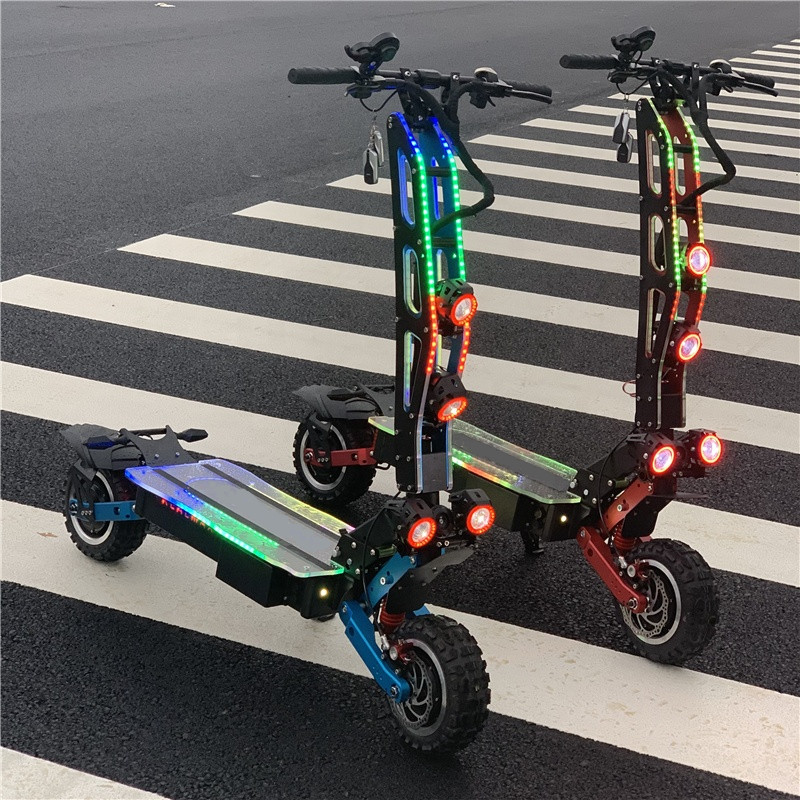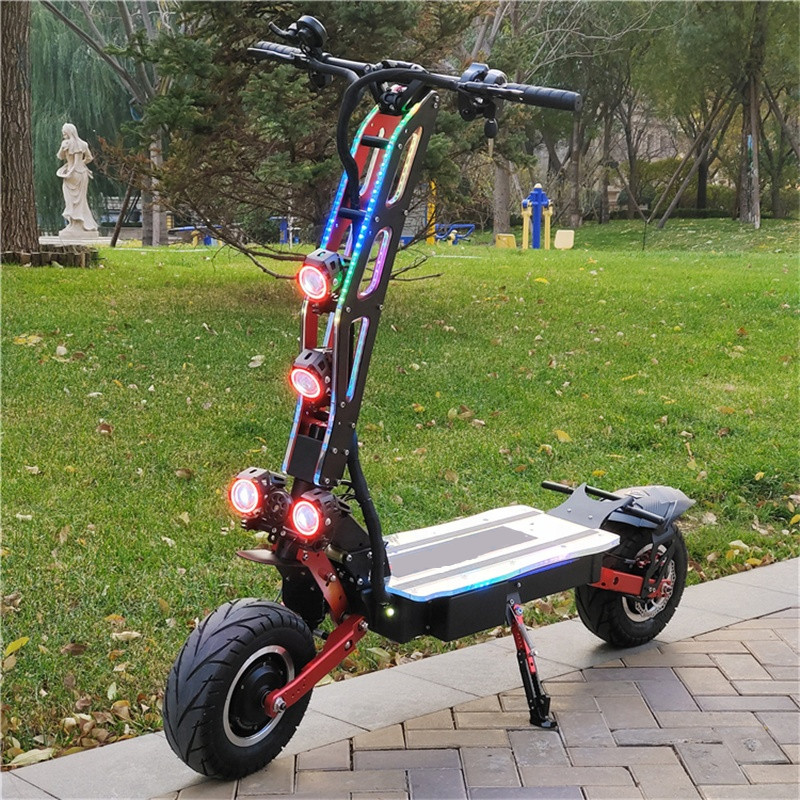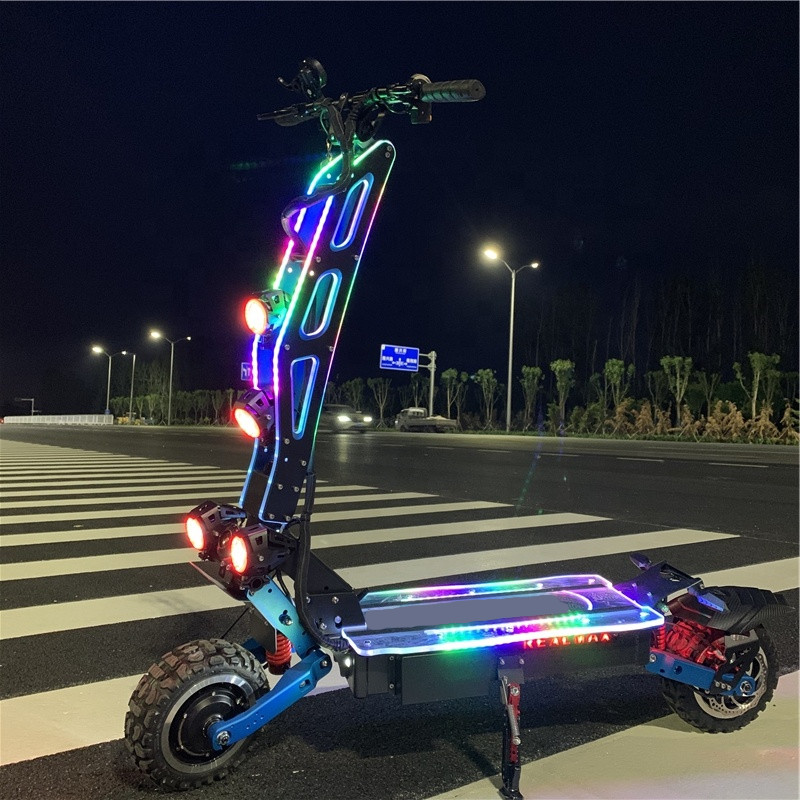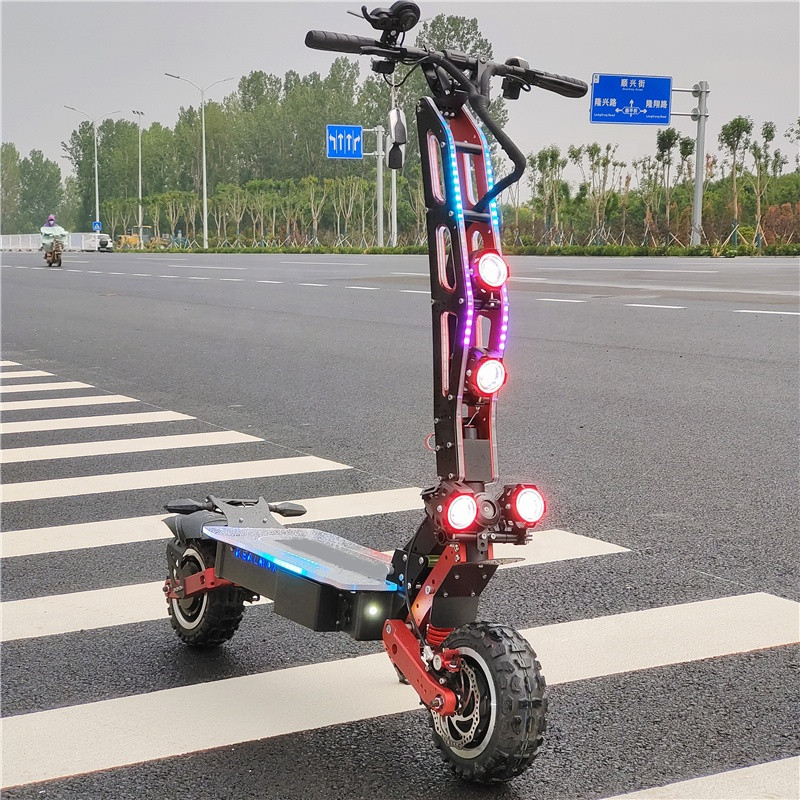Description
Off Road Electric Scooter For Adults
Electric Chopper Scooter
Light Up Electric Scooter
| Parameter | |
| Frame | High strength aluminum alloy 6061, surface paint |
| Forking forks | One forming front fork and rear fork |
| Electric machinery | 11 “72V 10000W brushless toothed high speed motor |
| Controller | 72V 70SAH*2 tube vector sinusoidal brushless controller (mini type) |
| Battery | 72V 40AH-45AH module lithium battery (Tian energy 21700) |
| Meter | LCD speed, temperature, power display and fault display |
| GPS | Location and telecontrol alarm |
| Braking system | After one disc, does not contain harmful substance, in compliance with international environmental requirements |
| Brake handle | Forging brake of aluminum alloy with power breaking function |
| Tyre | ZhengXin tire 11 inch |
| Headlight | LED lenticular bright headlights and driving lights |
| Maximum speed | 110km |
| Extension mileage | 115-120km |
| Motor | 5000watt per piece |
| Wheel | 11inch |
| Net weight and gross weight | 54kg/63kg |
| Product size | L* w* h: 1300*560*1030 (mm) |
| Packaging size | L* w* h: 1330*320*780 (mm) |
The 75 mph electric scooter was a game-changer for the city commuter. With its high-speed capabilities and eco-friendly design, it was the perfect solution for those looking to save time and reduce their carbon footprint.
However, as the popularity of the 75 mph electric scooter grew, so did the concerns around safety. With its high-speed capabilities, many feared that the scooter was too dangerous for city streets. In response to these concerns, the city council passed a new law requiring all 75 mph electric scooters to be equipped with advanced safety features.One of these features was an AI-powered collision avoidance system. The system used cameras and sensors to detect pedestrians and other vehicles in the scooter’s path, and automatically slowed down or stopped the scooter if necessary. Additionally, the scooter was equipped with a stability control system that helped maintain balance, reducing the risk of falls.Despite these safety features, some people were still skeptical about the 75 mph electric scooter. They argued that the high-speed capabilities were unnecessary and that the scooter should be limited to a lower speed. However, proponents of the scooter pointed out that the increased speed allowed for faster commutes, reducing the time spent in traffic and increasing productivity.As the debate around the 75 mph electric scooter continued, another issue began to emerge: range anxiety. Many users were concerned about the scooter’s battery life and whether or not it would last for their entire commute. To address this concern, manufacturers began to develop longer-lasting batteries and faster charging systems.In addition, they also introduced a network of charging stations throughout the city, making it easy for users to charge their scooters during their commute or while at work. This eliminated the need for users to worry about running out of power and allowed them to enjoy the convenience of the 75 mph electric scooter without any limitations.As the popularity of the 75 mph electric scooter continued to grow, cities began to see a decrease in traffic congestion and air pollution. The scooter was not only reducing the number of cars on the road, but it was also helping to decrease greenhouse gas emissions. This led to a push for more eco-friendly transportation options, and cities began to invest in public bike lanes and electric car charging stations.However, not everyone was sold on the 75 mph electric scooter. Some people argued that the scooter was only suitable for short distances and that it was not a practical option for longer commutes. In response to this, manufacturers began to develop larger and more powerful electric scooters that could handle longer distances.These new scooters featured larger batteries and more powerful motors, allowing them to reach speeds of up to 100 mph and travel distances of up to 100 miles on a single charge. They also had larger cargo capacities, allowing users to carry more with them on their commute.
Despite the push back from some, the 75 mph electric scooter was here to stay. Its convenience, eco-friendliness, and high-speed capabilities made it an appealing option for city commuters, and its safety features and improved battery life addressed many of the concerns that had been raised.

